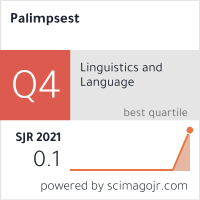“THE ACCIDENTAL TOURIST” IN THE CONTEXT OF ZOOMED-IN IMAGES IN THE MULTIMODAL INTERPERSONAL VIDEO COMMUNICATION
DOI:
https://doi.org/10.46763/PALIM21116211tAbstract
The aim of this paper is the analysis of interpersonal practice regarding the functions of a) semiotic and cultural connotations stemming from the prepandemic travel perceptions; b) global media interactions; c) cognition of (post)pandemic context of visual representations of social actors online. Our contemporary society is significantly marked by transcultural encounters, even more so on the notable hypothesis that the 20th century travel and tourism triggered global sociocultural exchange. Paradoxically, recently prescribed social distance and radical lockdowns have brought human interaction closer together due to unprecedented domination of close-ups or “Zoomed”-in video conferencing. Further challenges in technologically mediated world induced new types of literacy. Thus, the outlook of the 21century regime of images emphasizes multimodal production of meaning potentials for social actors in the image. Prevalence of visual representations of universal human interactions reflects cultural and biological traits, which contribute to participatory communicative apparatus. We “travel” (the world) less but “visit” (platforms) more; Metaphorically, the tourist experience has dramatically commuted online. Here, the term “accidental tourist” describes the unexpected practice of the individual, who still manages social encounters online, yet requires offline competences. The expected outcome includes the image-related dialogue on a broader scale of thel exposure in a sociosemiotic landscape, therefore a proposed concept provides for the applicable acquisition model for such practices.
Keywords: multimodality, transculturality, tourism, social distance, images, video conferencing, interpersonal visual competences.


